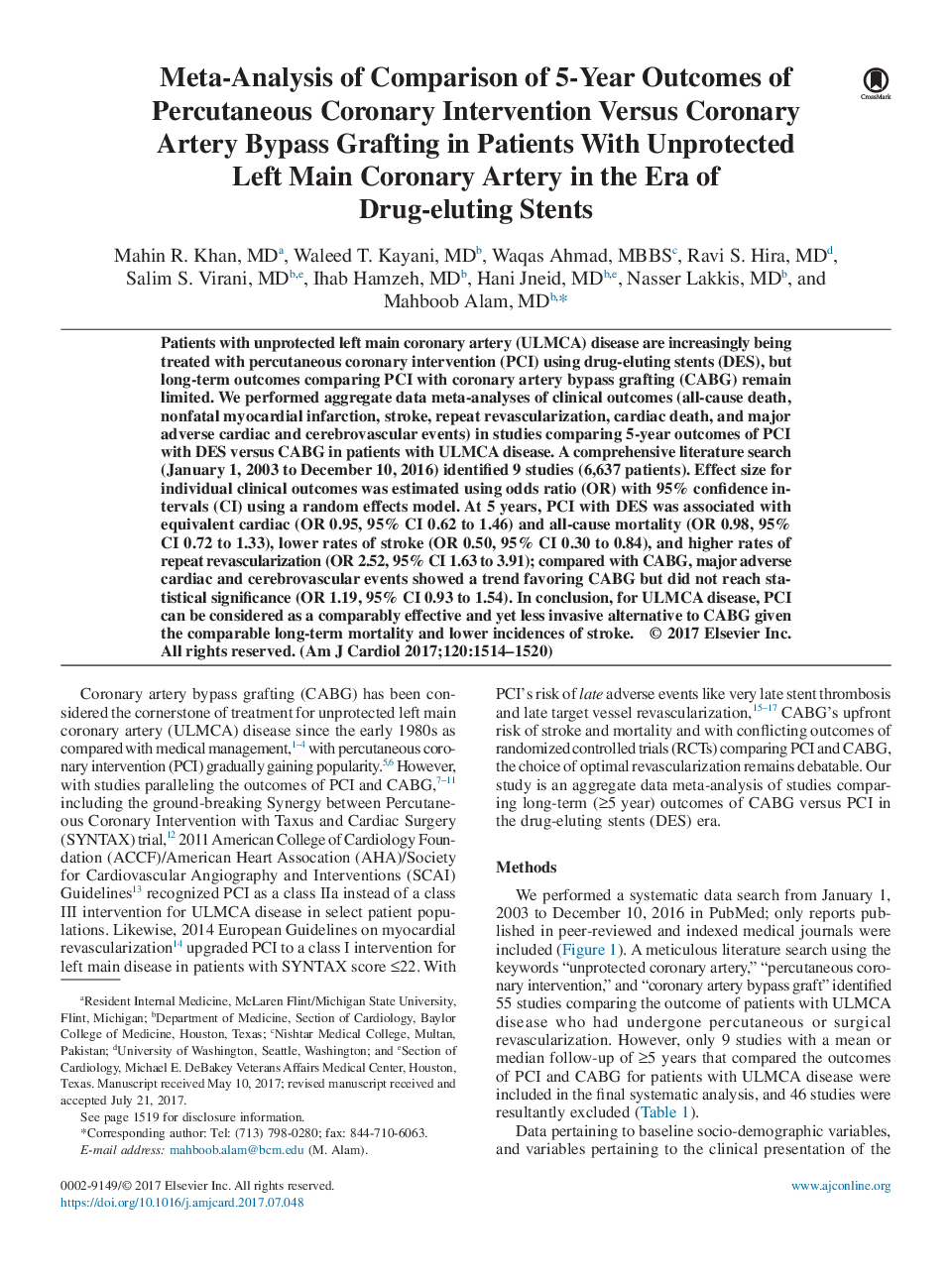| Article ID | Journal | Published Year | Pages | File Type |
|---|---|---|---|---|
| 8651683 | The American Journal of Cardiology | 2017 | 7 Pages |
Abstract
Patients with unprotected left main coronary artery (ULMCA) disease are increasingly being treated with percutaneous coronary intervention (PCI) using drug-eluting stents (DES), but long-term outcomes comparing PCI with coronary artery bypass grafting (CABG) remain limited. We performed aggregate data meta-analyses of clinical outcomes (all-cause death, nonfatal myocardial infarction, stroke, repeat revascularization, cardiac death, and major adverse cardiac and cerebrovascular events) in studies comparing 5-year outcomes of PCI with DES versus CABG in patients with ULMCA disease. A comprehensive literature search (January 1, 2003 to December 10, 2016) identified 9 studies (6,637 patients). Effect size for individual clinical outcomes was estimated using odds ratio (OR) with 95% confidence intervals (CI) using a random effects model. At 5 years, PCI with DES was associated with equivalent cardiac (OR 0.95, 95% CI 0.62 to 1.46) and all-cause mortality (OR 0.98, 95% CI 0.72 to 1.33), lower rates of stroke (OR 0.50, 95% CI 0.30 to 0.84), and higher rates of repeat revascularization (OR 2.52, 95% CI 1.63 to 3.91); compared with CABG, major adverse cardiac and cerebrovascular events showed a trend favoring CABG but did not reach statistical significance (OR 1.19, 95% CI 0.93 to 1.54). In conclusion, for ULMCA disease, PCI can be considered as a comparably effective and yet less invasive alternative to CABG given the comparable long-term mortality and lower incidences of stroke.
Related Topics
Health Sciences
Medicine and Dentistry
Cardiology and Cardiovascular Medicine
Authors
Mahin R. MD, Waleed T. MD, Waqas MBBS, Ravi S. MD, Salim S. MD, Ihab MD, Hani MD, Nasser MD, Mahboob MD,
